Museum of Natural History Vienna
- Address: Burgring 7 1010 Vienna, Austria
- Tags:
 What to see Vienna,
Vienna,
Austria
What to see Vienna,
Vienna,
Austria
- Website: http://www.nhm-wien.ac.at/en/museum/contact
Visiting the Museum of Natural History Vienna (pt1)
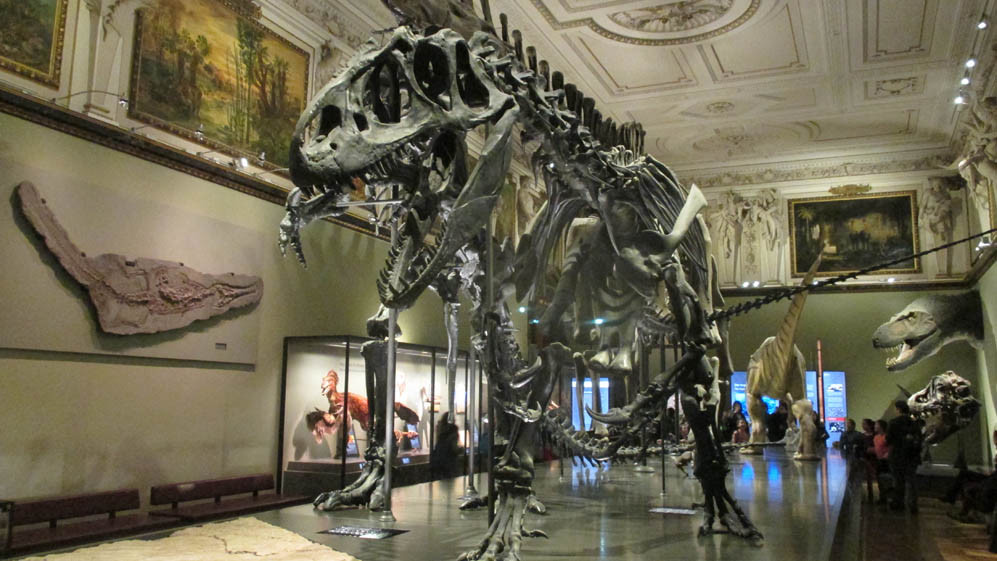
Hey guys, time to bring on the report [part1] from one of the most impressing museums I have been to. The title is of course about the Museum of Natural History Vienna.
Though I spent 4 months in Vienna I finally had the opportunity to go without stress and obligations with 4-5 hours in my pocket just one day before leaving for Zagreb. Well, almost without stress because this was the only working day I was not at my studio (Erasmus internship) and even there after enjoying the exhibition my boss called me and almost caused me a heart attack. It was almost impossible to be there and enjoy half of the day without being involved into job related to our studio...
Anyway, the Natural History Museum in Vienna is one of the oldest, the biggest and among the richest museums in the world with its impressive collection of more than few million exhibits. Actually, the number of items in collection is around 30 million! Among the famous items this museum has is surely the small sculpture of the Venus of Willendorf dating back around 27 000 BC.
But who cares about that - the museum has tons of cool exhibits such as the dinosaur bones and even an animated toy, a large collection of almost all known species (worth exposing), fossils, mammals, birds, fish, minerals and "precious stones". One large part of the space is dedicated to humans which alone needs at least 2-3 hours to check in details. There were some other exhibitions such as the age of the planet and changes on the surface of the Earth followed by cool looking infographics.
One more interesting thing is that the Museum looks much bigger from the inside and when you have to walk around than it is from the outside.
But let us go step by step from how to get there, through the entrance and the floors ending up with the souvenir shop. I tried to document a lot with photographs and will do less text (who wants to read about scientific texts anyway? ) and let you enjoy the photographs and videos. I would like to note I will break this into 2-3 parts as I have lots of photo material for the sections and I think you care more of them than the text. After all, I spent around 4 hours there and trust me - it's not something you can demonstrate in a few paragraphs.
Ready?
How to get there
The museum is located on the Maria Theresien Square confronting the Museum of Art History in the neighbourhood called Museumsquartier. The entrance of the museum is as well from the Square of Maria Theresien.
Since the place is surrounded with the Burgring near the Volksgarten, the Parliament and the City hall (Rathaus) plus the Museumsquartier on the other side you have really several easy options to get to it. Even if you are not the best person when it comes to maps and orientation it is impossible to miss it.
You can reach it by using the public transport:
- Metro
Use simply the U2 (Karlsplatz-Seestadt) and get off at the Museumsquartier Station. You will have to cross the the road and within 3 minutes you are standing in front of the gates. The other option is Volkstheater, maybe even closer.
The U3 (Ottakring-Simmering) will stop at Volkstheater.
- Tram
There are several tram lines going on the other side around the 1st District and the area known as the Burgring where you have to leave at the stop Dr. Karl-Renner-Ring. These tram liens are 1, 2, 46, 71.
- CityBike
There is a bike stationery in front of the Museumsquartier (next to the Museumsquartier station).
Since it is in the center you can walk from Stephansplatz and reach it within 10-15 minutes.
The opening hours
The museum can be visited every day except for Tuesday, which is great as it lets its doors open even on weekend.
However, there is another day being an exception here (and good for you):
- Thursday-Monday open from 9am till 6. 30pm
- Wednesday from 9am till 9pm
There is also a note that you should not try to get in it in the last half an hour as they close the entrance. But I think no one is crazy enough to go there right before closing.
You have to plan to stay at least 3-4 hours in the museum to check everything, if you like to stop and read.
There are a few exceptions on special dates such March 22, December 27 and January 3 when it is opened from 9am till 6. 30pm
It is closed on Dec 25 and Jan 1. I think this was even not worth saying.
The prices
When talking about prices you will be happy if you are a student. The price for the students and those under 27 is only € 5.
The free entry is reserved for the children and youth under 19, friends of NHM Vienna, visitors in wheelchairs and those with the 'Hungry for art & culture" card. This museum does not have a free entrance on Tuesday like some other... but for the price and what you can I think it's pretty fair.
If you happen to be the adult you are going to pay € 10.
Another good thing if you plan to visit it more often is the annual pass for € 27 or share with other people.
Entering the Museum
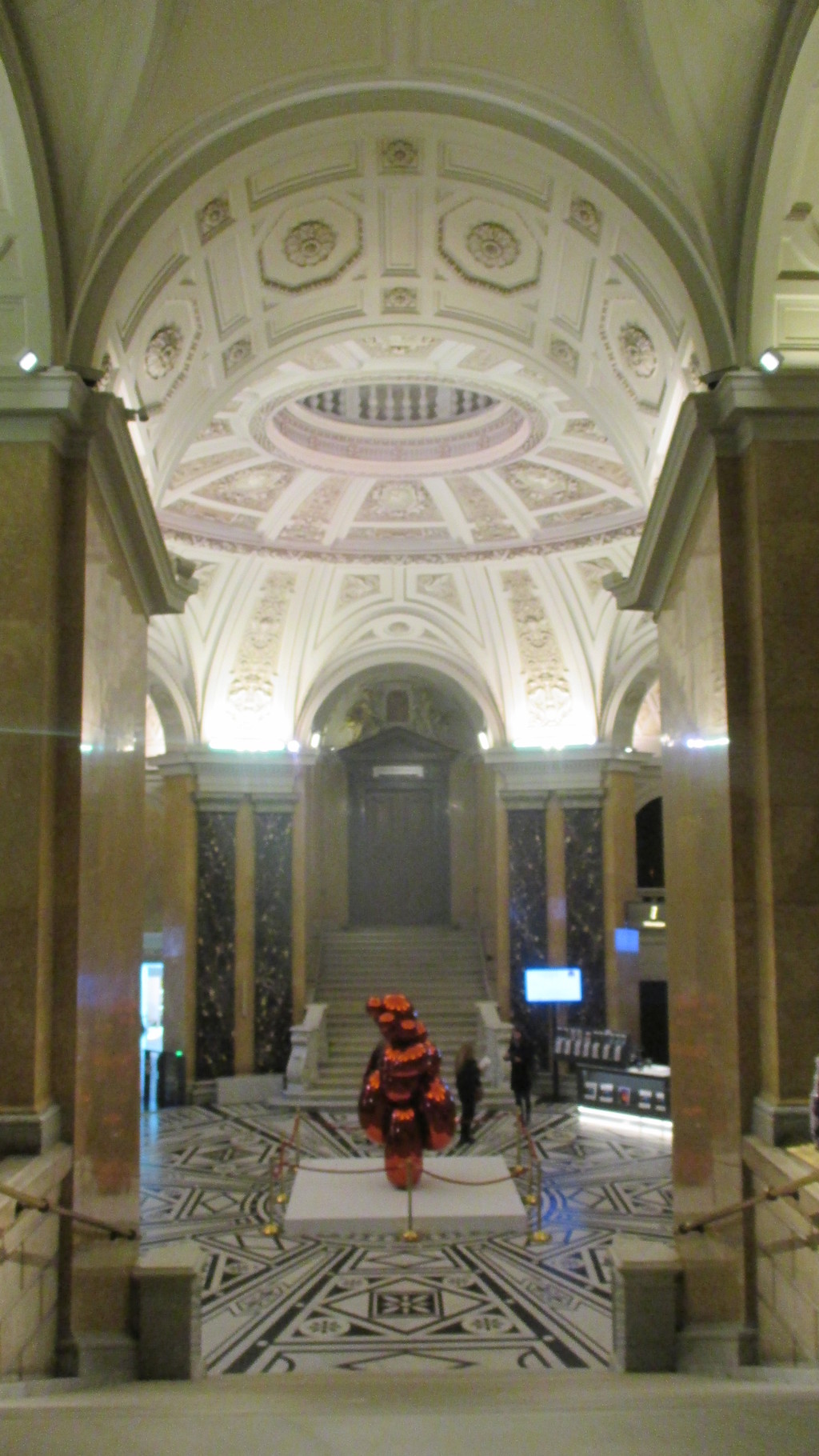
There is a hallway with the ticketing office which once you pass enter the great hall. You will be amazed by the architecture for sure! In the center is some abstract sculpture, behind it one more info table where you can get the prospects including the map in several languages.
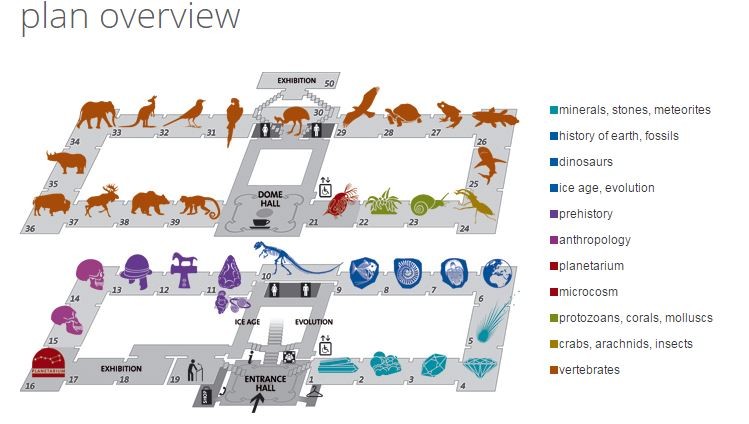
To your left is the souvenir shop which you can visit on your way out of the museum once the tour is over.
Lastly, there are three stairs on each side. Not to confuse you where to start if you want to see it all from the first to the last room according to the map.. then simply start with the right gates. The middle stairs lead to the second floor and those to the left we are going to pass once done with the tour here.
Let's start from the beginning and enter the world of...
1 Mineralogy & petrography
The hall 1

I climbed up the stairs to the right and entered the room. There were about thousands of minerals behind the glasses. As far as I remember it was the largest collection of the minerals and stones on the one place I have ever seen.
I tried to go throughout all the exhibition by making the circle of every room and use this unique opportunity to observe everything with details. I became tired though later after spending 3 hours at the museum and could not follow everything being hungry and thirsty. But there is also solution for that once we climb to the last floor.

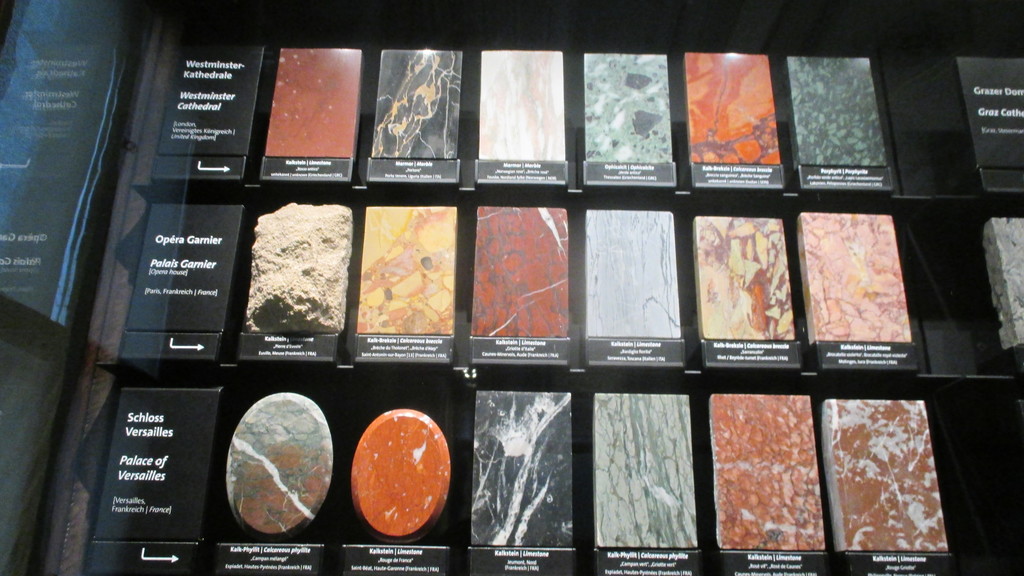
There were several rows of wooden cases with thousands of different sorts of minerals and stones. This principle was the same in every room. It was cool as you could just feel how old the place was. The museum was built at the end of the 19th century.
The left wall was also consisting of some "black sheep" - birds and mammals. Apparently it was a part of some temporary exhibition. While standing there I noticed the guard and asked him whether we were allowed to take the photographs. As you can see you are allowed to do it without flashlight.
I checked every row here and let's move to the next two halls.
Hall 2 and 3
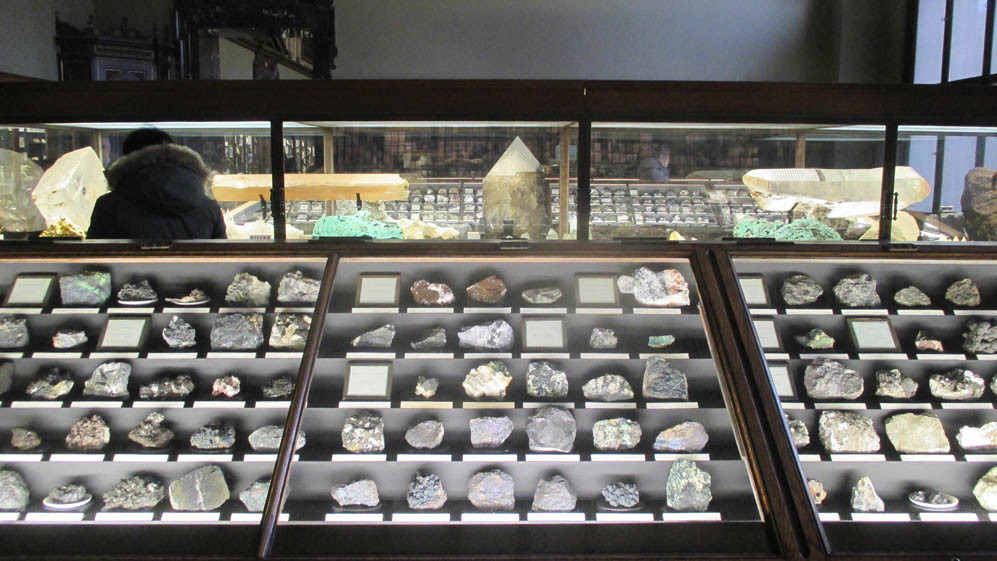
The next two halls were looking pretty similar. They consisted of several other large collections of the minerals collected in the last few centuries worldwide. It was surely interesting to watch them in front of you with all the details.
All these minerals seem to us to be the same but looking at just one vitrine with some of them you get the idea that things would look totally differently if they were used as the texture for the streets.
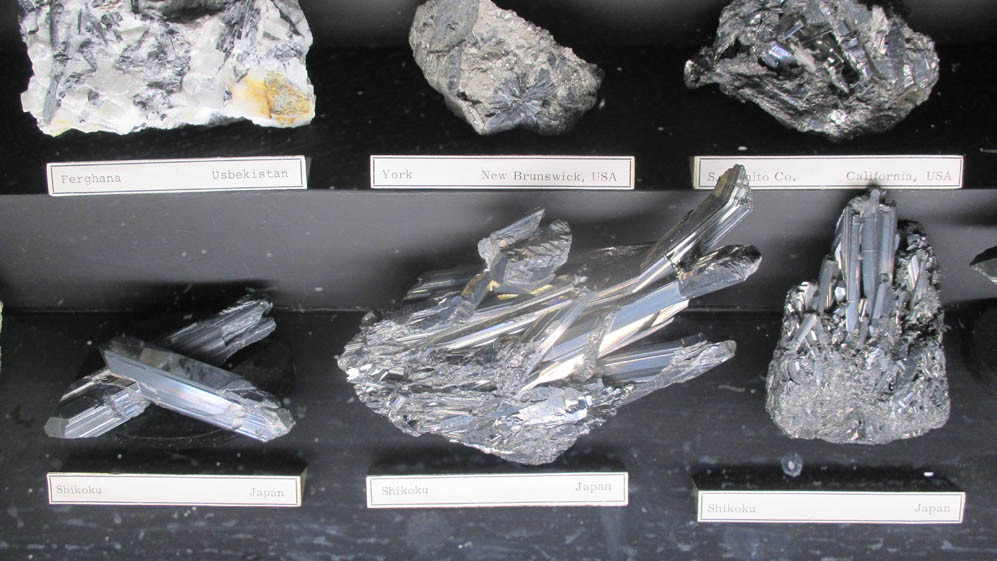
However, after the second hall the third one was a bit too much. Seeing probably a few thousand examples, if not 10 000, just makes you feel tired. Then it all started to look the same to me.
I might mention there were some huge minerals with sharp spiky forms putted individually into the large display cases that attracted your attention, as well as a few examples (you could touch some of them) bigger than the average visitors. But really you cannot spend here too much time unless you are crazy about it.

In just the first three halls I might have stayed for more than 20-30 minutes. This museum is great as it really provides you with tons of material to study and observe but is also tiring. A bit impossible to stay fresh (unless taking a break at the restaurant on the 2nd floor) and able to pay attention to everything till the end.
But let's move to one more interesting and the last part of the minerals.
Hall 4 - The Gemstones

The last hall was the biggest one. All the halls in the corner were bigger than the rest. At first I did not much attention wanting just to go to the next part with something more exciting and interesting... but then I saw the nice looking stones such as diamonds, rubins, emeralds etc... some of the most expensive and rare gemstone one is able to see through the special glass (such as up on the photograph).
There was gold, diamond, turquoise and many other. If you are interested to know more details please visit the official page.
And some more photographs of the hall:
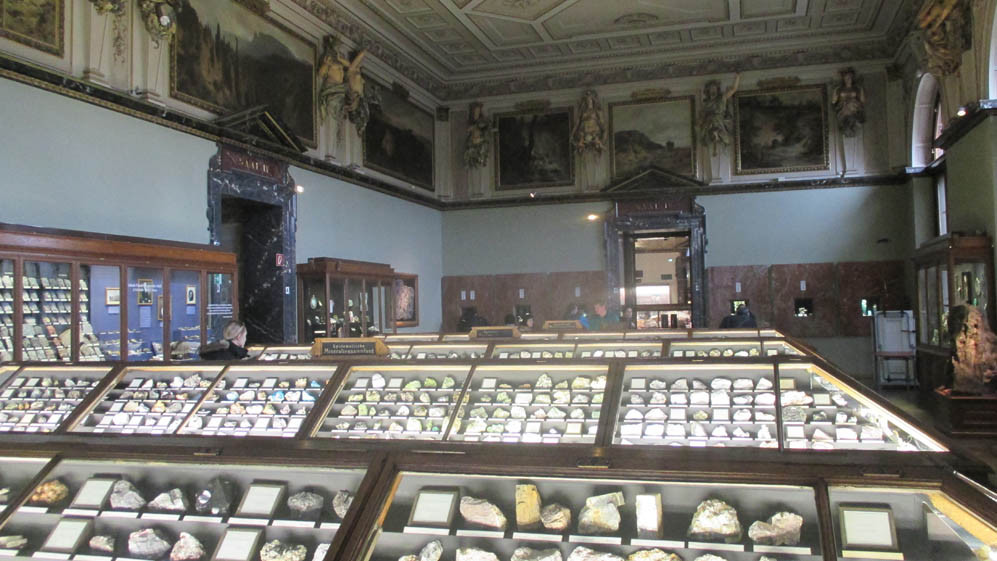
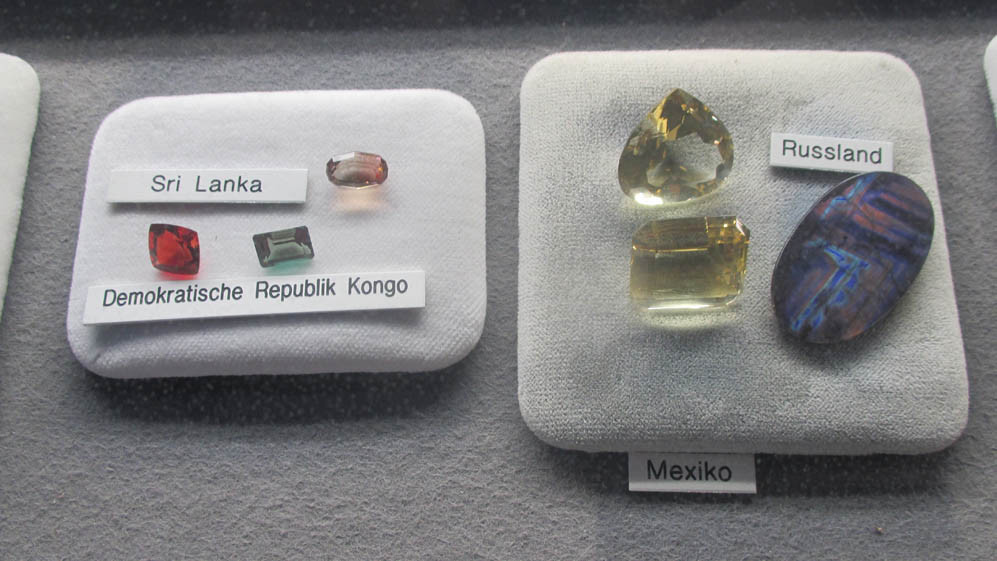

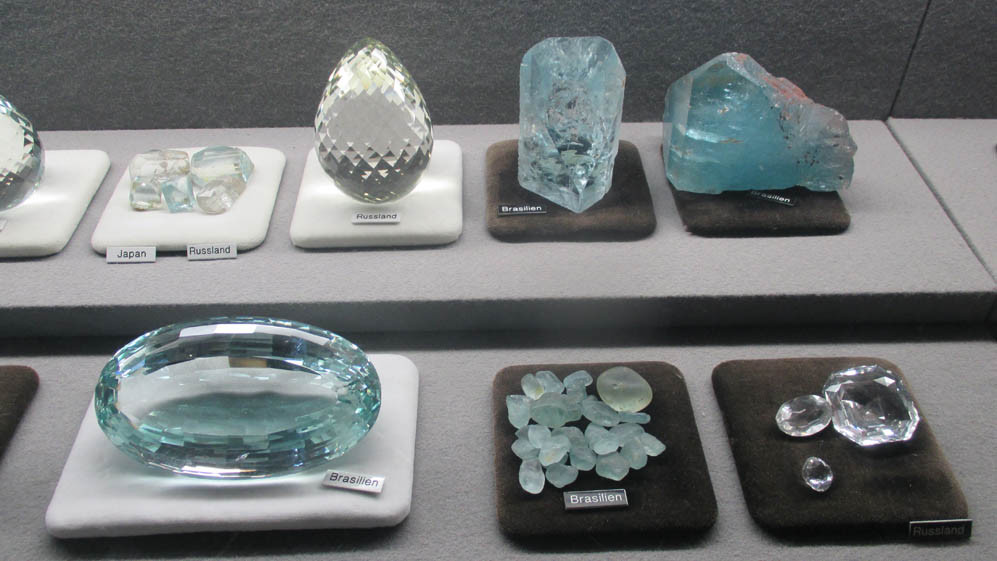
Pretty nice looking, right? I love the colours.
Hall 5 - The world's biggest and oldest meteorite collection

The last hall of this section was about the meteorites and what I found totally interesting here was the simulation and the educational part of the Moon's surface. Though the central part of the hall was filled with meterorites I do not remember much seeing them.
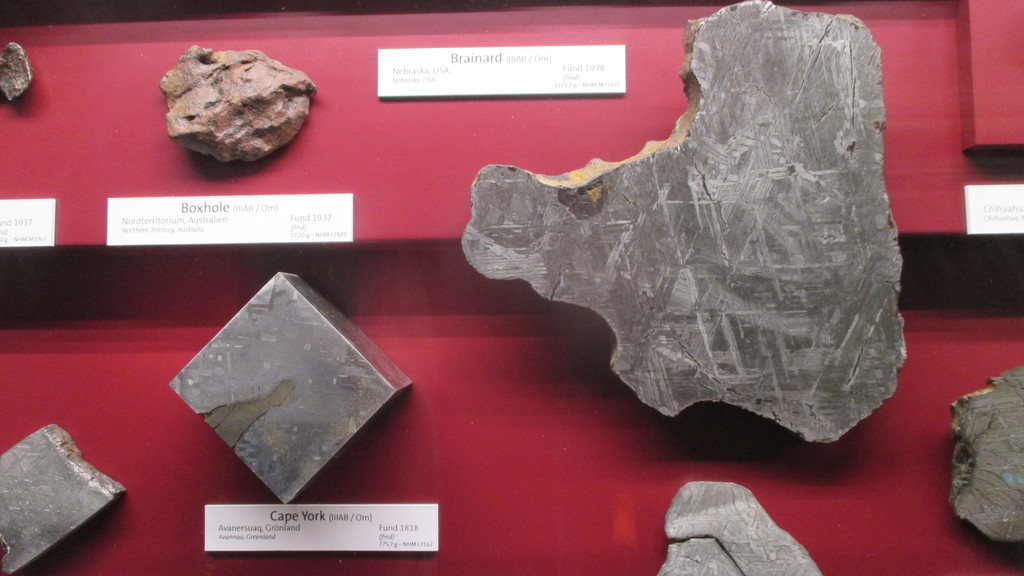
What I suggest is watching the "gut gemacht" videos and the other multimedia displays there. The whole wall filled with infographics in both German and English plus exhibited some of the rock found on the moon. There was also a video of Moon's creation which I find very interesting and good especially for the youngsters and pupils. This is the kind of museum I prefer. And this hall was just an introduction to more. I believe there is no student who can resist learning about the nature and its history this way.
Let's move to the new section about the creation of Earth, water and life on it!
2 History of the Earth and the fossils
Now the real story begins! And one of my favorite parts of the museum. I bet you are going to love it too and especially the freshly designed infographics and 3D models of the Earth's history and the beginning of the life. I was thinking one can learn and be much more motivated here about geology and biology than when we spent our days in school. Very educative and informative. Besides the new design there are plenty of real size or simulations of the prehistoric animals. Because... the prehistoric world is simply cool!
Hall 6 - History of Earth - Genesis

This hall covers pretty much all about the creation of the Earth and provides you with plenty of educational material. I stopped at each infographics panel to read in both German and English about the beginning of the life, about the cells, first forms of life, conditions on the Earth, the layers of Earth etc...
The texts are written in order that everyone can understand it and learn with ease. This is the big advantage of this museum and I while standing there I noticed a few groups of students or pupils from the elementary school with teachers going around and using the interactive material. There were some parts dedicated for the youngest by letting them use the toys and run around the hall.
You will find there many videos and I highly recommend you to stop and watch it. Some of them include the formation of the Earth billions of years ago, the effects of the Solar system. One especially interesting video was the simulation of the meteor hitting Vienna and how big meteor crater would it create. The meteor was the one that hit the Earth when the extinction occurred. Apparently almost everything till Slovenia-Croatia would have been destroyed.
You will find the models of the first prehistoric life forms and animals. If the bugs and insects were there simulated in the real size than it would be a huge problem if they suddenly came to life! They put them above our heads simulating the flight.
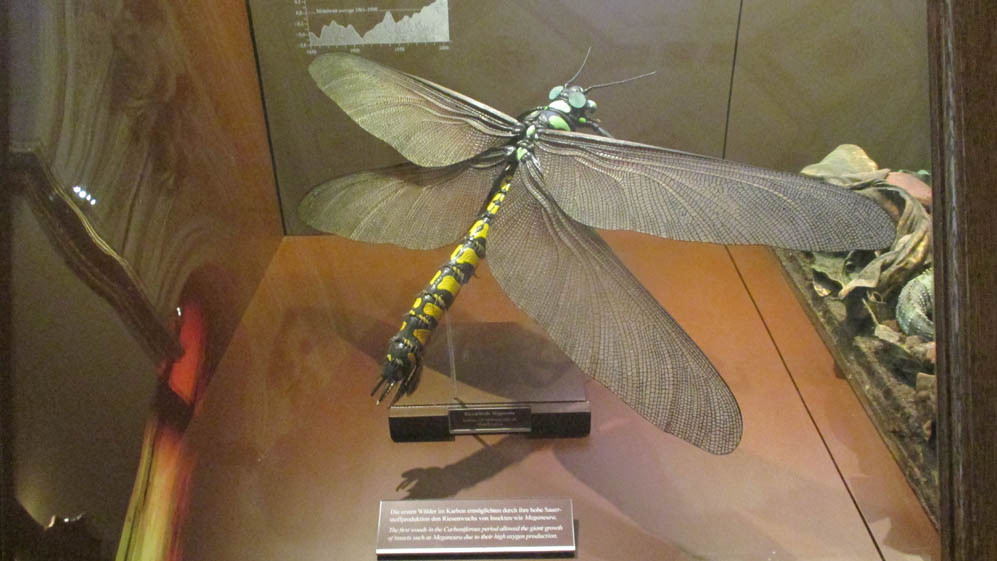
Along the wall to the next hall you will find plenty of information including the models and taxidermy animals introducing us to the modern world and the problems with the contamination and global warming.
I loved this part because it's some kind of a general introduction and dedicated to all parts of the Earth's history, a bit of everything in one hall which does not make it tiring for you to follow.
The last place you should visit there is the dark room, literally you cannot see your finger in front of your nose except for the display screen in the center. And behind the display screen is the big globe rotating all the time and displaying different stages or categories of the Earth's surface such as the tectonic plates, ozone, the effects of the UV and so on.
Great! We are now going to proceed into the next three halls which are full of fossils and kind of introduction to dinosaurs!
Hall 7 – The first fossils
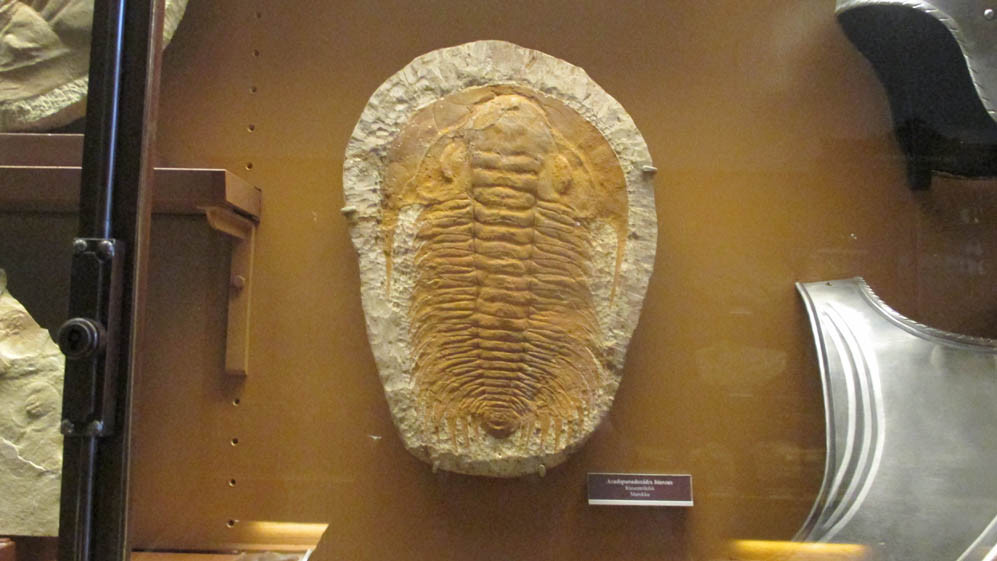
The next three halls are filled with fossils from the oldest and simplest life forms till the more complex ending with the dinosaurs. I am not going to try to describe here everything by using the scientific information as it would be both complex for you and me.
What you are going to find here are again several rows of display cases with the first forms of life, prehistoric insects and fish. If you watched the movie The Mummy then you will surely recognize some of the them such as the trilobites. I believe most of the Erasmus students were back in the elementary school back then and the trilobites were indeed terrifying in the movie. One could here find both small examples but the bigger ones size of a ball or more too!
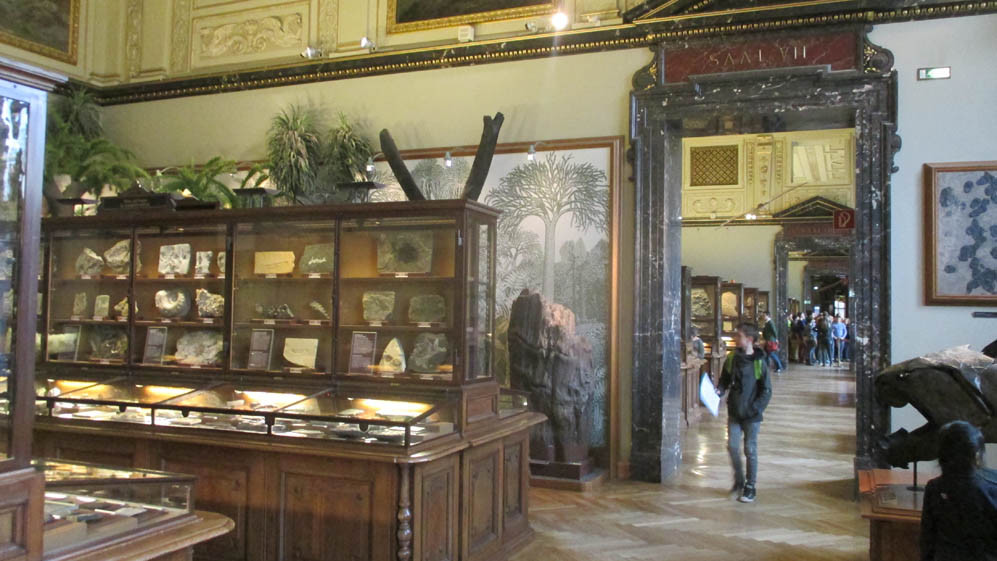
The cool thing with the fossils is that they look pretty much like an artistic stamp or kind of a press. I tried to go around all of them to see how diverse they are and it is always interesting to follow the evolution and how the life has changed in the past millions of years.
There were plenty of shells which looked much bigger than those you find in Dalmatia when going for a swim on the beach.
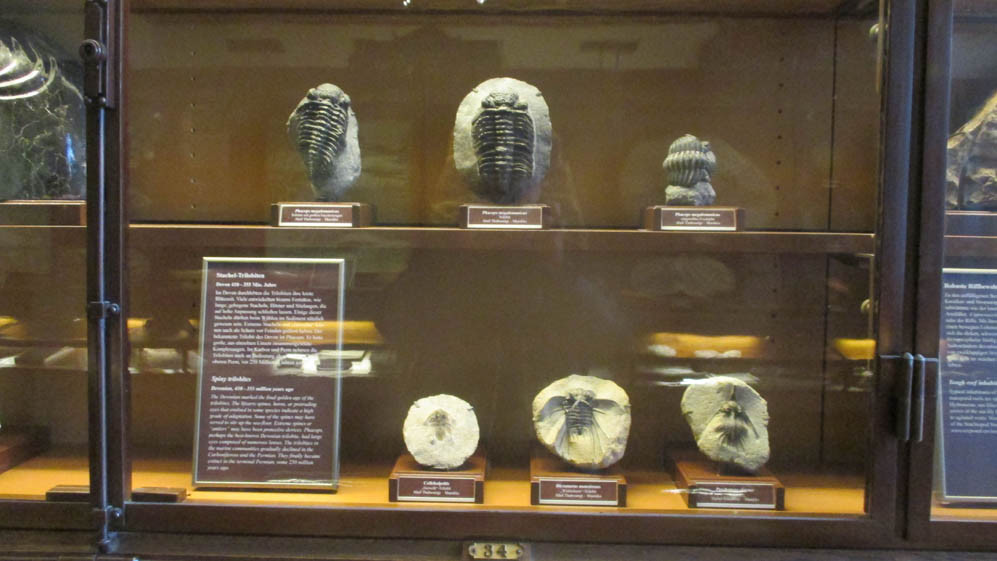
Though there were the fossil in the vertical display cases you could find the big sized stones and plates with them along with the simulation of the bottom of the sea and the prehistoric fish „swimming“ at the horizontal ones.
In general what most of you will remember from the school are those latimeria fish with the tough fish scaling or rather armour and the trilobites.
Besides these fossils we have the opportunity here for the first time to see some big bones and fossils of the first dinosaurs and creatures from that period. There was some big guy on the four feet, the whole skeleton.
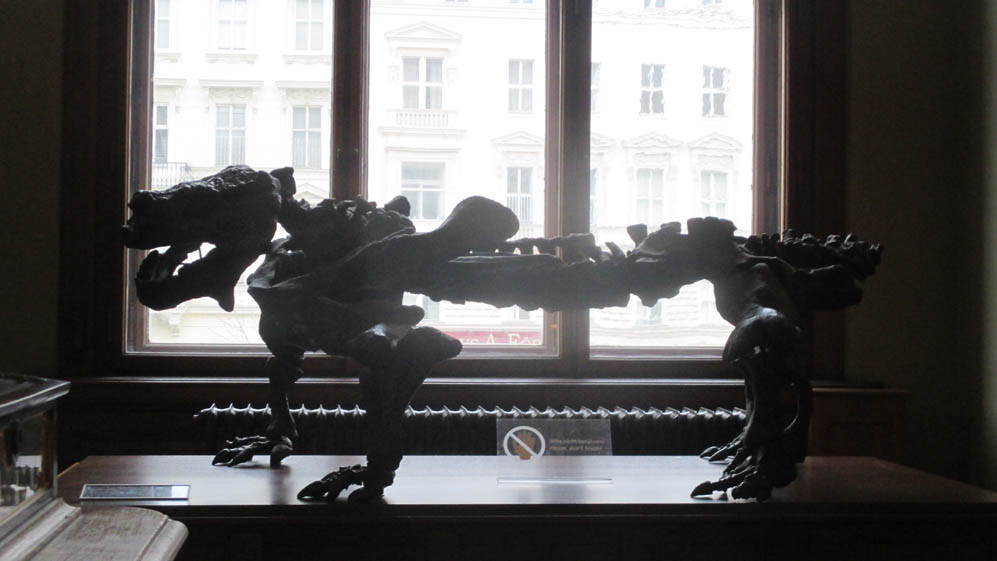
This area was just a warm-up for the next one. I also noticed many kids (from the school) running around with the papers and trying to give the answers about some exhibits. I found this to be a pretty interesting task to learn more about the geology and the prehistoric world since they got everything there in the museum plus when you are a kid everything seems much bigger and more realistic.
Let's move further!
Hall 8 – More fossils and the first dinosaurs
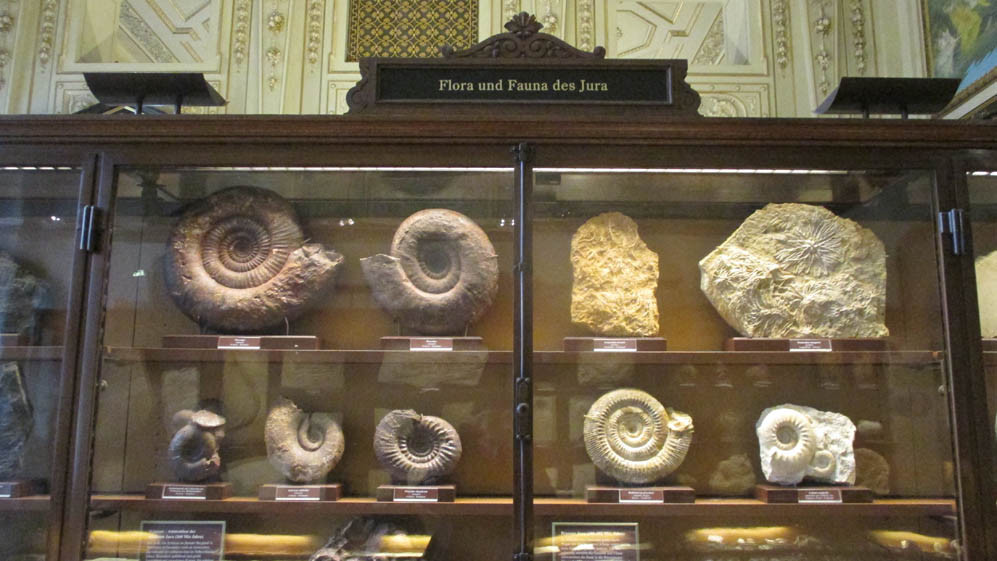
This hall was transition now into the world of the first life forms that left the sea and adjusted to the life conditions outside the oceans. We are going to see more of the fossils of now bigger animals and of the first raptors.
Let me first comment the two more skeletons and the bones next to the windows. There was a huge bone of the Ultrasaurus (similar to the long Brontosaurus) and the of the triceratops. Impressive indeed.

Next to it was a large skull of a head of some sea monster. I would have been scared to death knowing this thing was swimming and hunting in the depths below me back in the time. Luckily, at least in Croatia, there are no such dangerous animals. The fish back there were more like tanks with their hard skin than the situation today is. Still we have much to explore. Speaking of the fossils of Latimeria we are going to see one on the second floor.
I believe you are not going to be much occupied with the similar fossils to the ones in the previous hall but rather the last corner and the last row of the display cases.
There you will find the reconstructed rain forest with a small Stegosaurus and some huge or rather gigantic insects around the trees. It is very interesting how everything on Earth became much slower when compared to the prehistoric animals and their size. Those insects here looked like giant mosquitoes.
This is also where the first skulls and bones of the bigger dinosaurs were represented. And I mean those who looked liked the raptor-hunters. There was a skull of Allosaurus or some other scary hunter.
The next hall was even more interesting!
Hall 9 – Dinosaur bones and other creatures

As soon as you enter it you will step away after facing the giant mutant looking mixture between a dinosaur and a bird. Wait, dinosaurs are cousins of the birds that got extinct? Or are the birds today actually dinosaurs without teeth?
Nevermind, the scary figure in front of you is called Phorusrhacids... or simply known as the Terror bird. This guy used to inhabit the area of Southern America all up to 10 000 BC. You can only imagine what it would be like trying to run away from the pack of those hunting you in the forest or across the plain. This creature in front of us is between 2-3 meters and is also the first real size model of this dinosaur in a museum worldwide. Congratulations Vienna.
The next impressive exhibit in this hall is the gigantic bone of the leg of some huge dinosaur. It is several meters tall and I had to crouch to get it all. Surely impressive when you have to think of the whole skeleton and how large was the animal it belonged to.
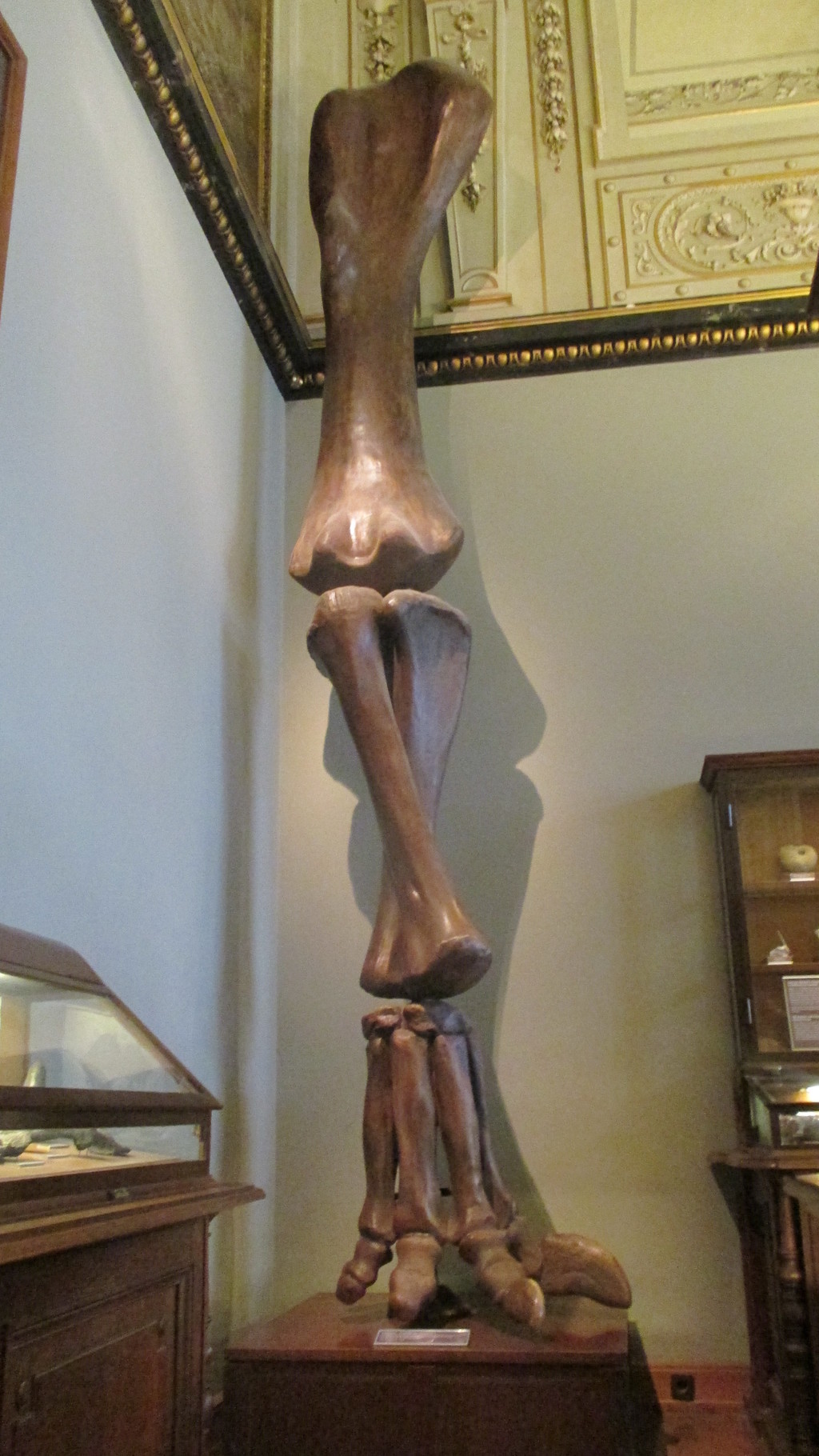
As for the rest of the room you find a big collection of bones of different size. There were parts of the legs, arms, teeth, armour, skulls... in small and big dimensions. Except for the bones there was one fossil of a small mammal, poor guy.
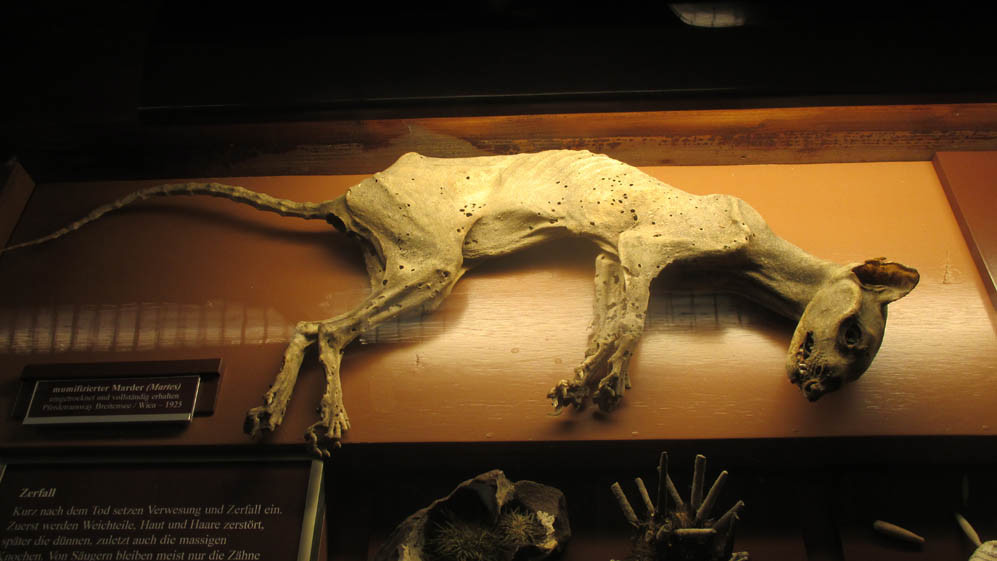
It was particularly interesting to observe the jaws of the creatures and various sorts of teeth.

Lastly, there were a few more fossils in a better condition with much more details showing the prints of the fishes and other creatures.
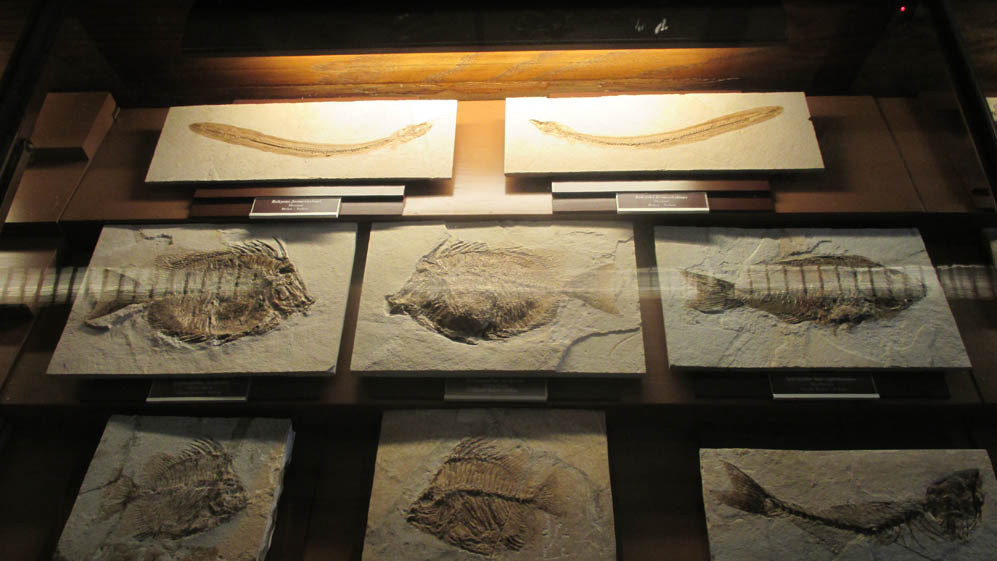

Well, time to enter the last hall! You will notice many children running there, screaming and shouting. Let's find out what is the reason behind it.
Hall 10 – The dinosaur hall: where the dinosaurs come to life

Now what to comment first? This is the hall that fulfills any child's dream of wanting to see the big skeletons of the dinosaurs but also to see one coming to life.
The first one that catches your eyes is the gigantic skeleton of Brontosaurus across the whole hall. It is probably the biggest skeleton as well that this museum has in the permanent exhibition. Then your eyes are going to notice the skeleton next to it which is one raptor, a carnivore. It is also relatively large, bigger than the humans, and looks scary too. I Believe there is no kid who passed by it not being impressed. The word is about Allosaurus and you can find both information of it and the other two skeletons on the info bar below its feet. The third skeleton is at first not recognized but it is also some kind of a big carnivore. The last thing to add here is the video simulation of the dinosaurs being transported back to museum of Vienna.
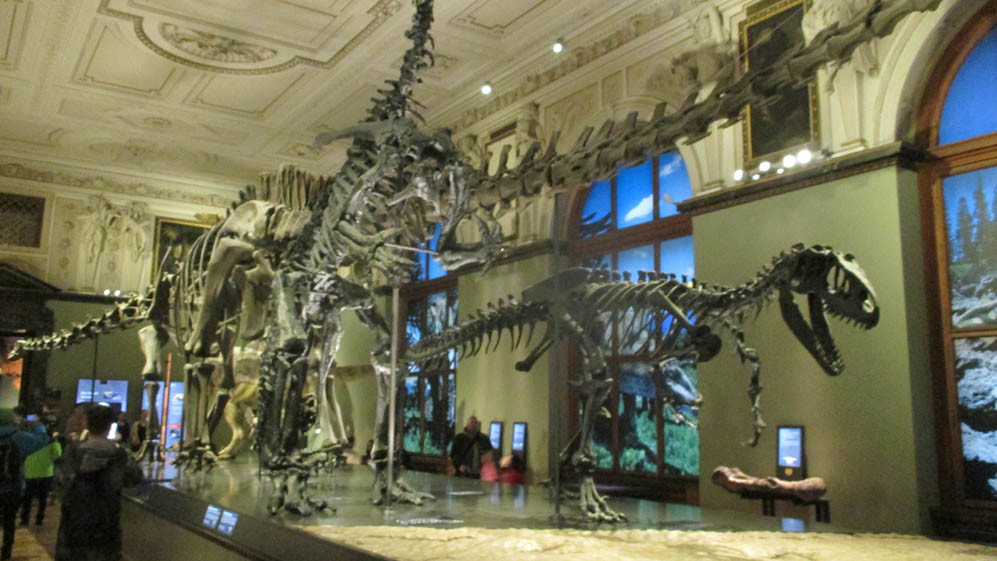

These two skeletons are part of the central part of the hall with one more dinosaur standing on its feet on the other end. And that one dragged lots of attention.
Before we go there let me comment the of the area. Next to the entrance there is a corner with the sea dinosaurus with 2-3 large skeletons on the walls. I believe we have seen some of them in the old BBC Dinosaurs series and most likely one of them was in the Jurassic Park (World) movies.

Above our heads is the large skeleton of the Pterodactyl.

Another interesting feature in this hall is the interactive and educative touch screen game where you are the archeologist and just like Dr. Grant have to discover the wanted parts, the bones of the dinosaurs on the terrain. It is going to be of fun for children.

Next to it is the large bone of some dinousaur that you are allowed to touch. But it is like any other stone, let's be real.
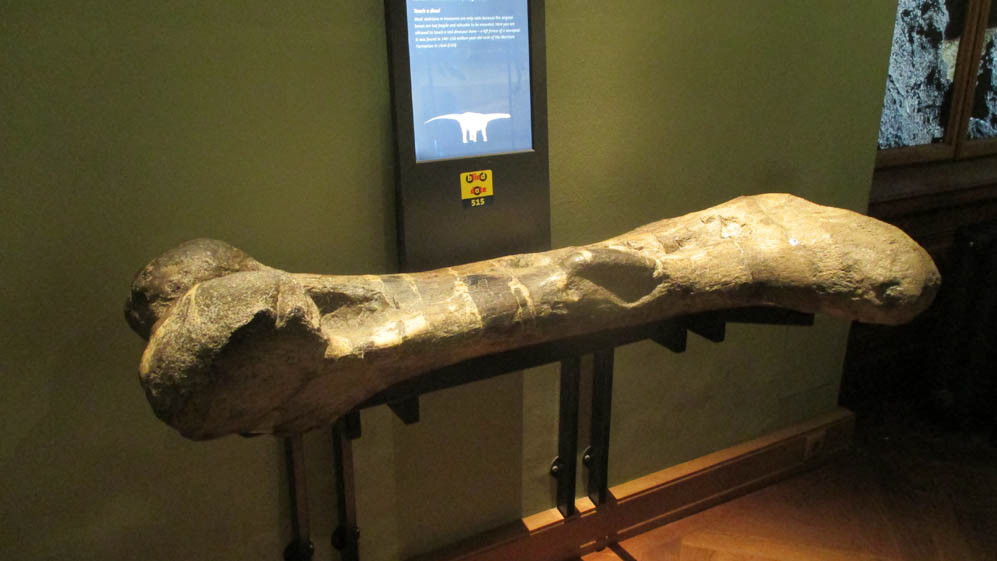
On the other side is the vitrine with some human size dinosaur that looks like a modern bird with the red feather. I thought it was a Velociraptor but they were supposed to be much smaller.
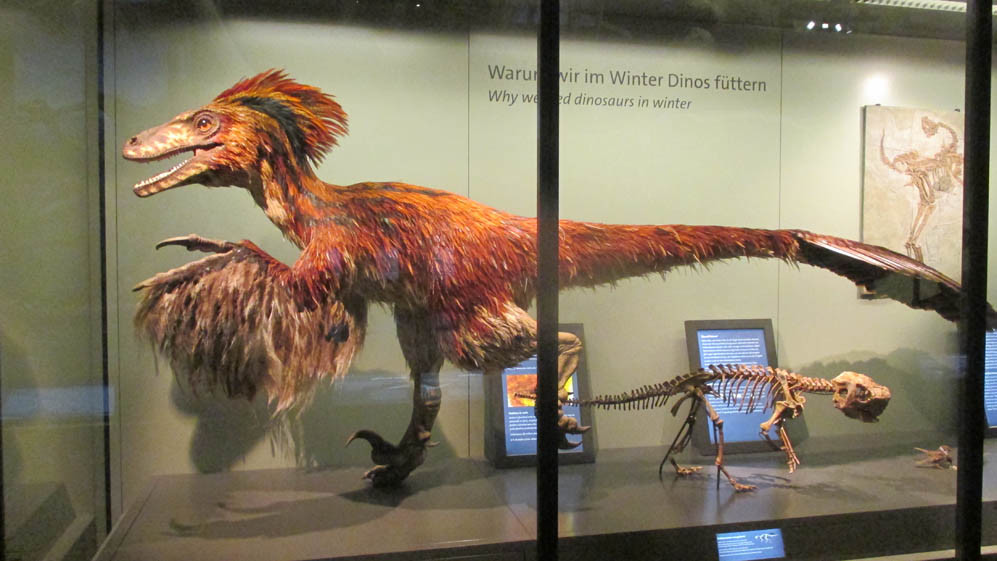
And finally... the last part of the hall and what everyone of us wants to see and experience.
The main attraction in this room is something especially built for the museum in Vienna. It is the lifelike, movable doll of Allosaurus which moves around with its head, hands and tail almost all the time producing various kinds of noises to scary the visitors. This attraction is without doubt something all the kids want to see and I believe it is going to be fun for adults too. I recorded a bit the tour around these guys which you can watch here. We just miss Ben Stiller here and everything would be like from the Night at the Museum. There are even events for children called "Night at the Museum".
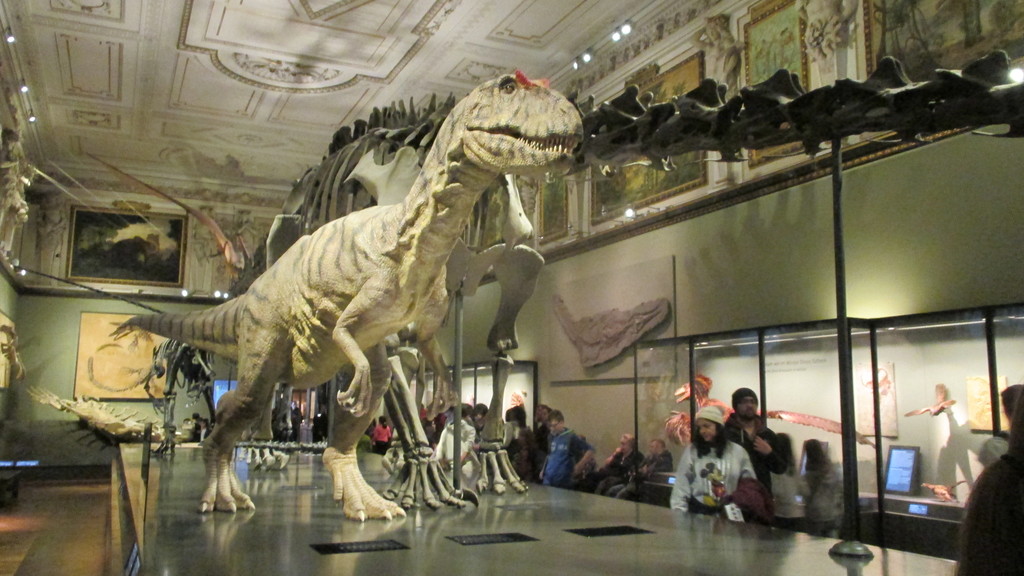
The two-three more things worth seeing there are the real skull of the Tyrannosaur Rex and the one from the Jurassic Park. And for those who care there is another skull of Triceratops.


We are now done with the Dinosaur and Evolution section and also stopped at the half of the first floor. I was really excited but also got tired a bit. I spent more than an hour just here and still saw about 25% of the museum.
Here you have the possibility to go further to the Ice Age section or back to the Entrance hall. The restrooms are also available close to the doors.
Part 2 coming soon.
Photo gallery
Content available in other languages
- Italiano: Visitando il museo di storia naturale di Vienna (prima parte)
- Deutsch: Ein Besuch des Naturkundemuseums in Wien (Teil 1)
- Español: Visitando el Museo de Historia Natural de Viena (parte I)
- Français: Visite du Musée d'Histoire Naturel de Vienne (Partie 1)
- Polski: Wizyta w Muzeum Historii Naturalnej w Wiedniu
- Português: Visita ao Museu de História Natural de Viena (parte 1)
Rate and comment about this place!
Do you know Museum of Natural History Vienna? Share your opinion about this place.































































